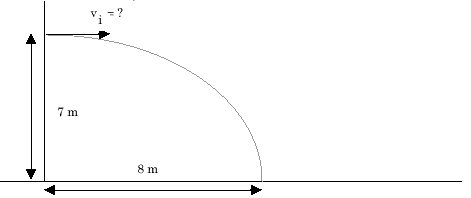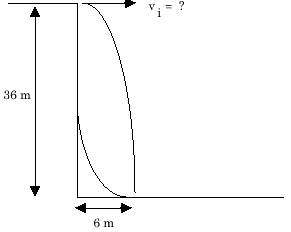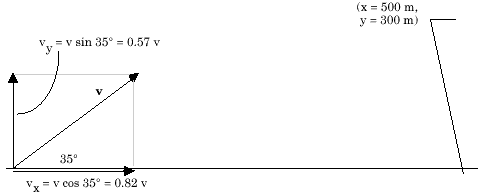
PHY 1151
Doug Davis

PHY 1151
Doug Davis
![]()
| ToC, Chapter 4 | Course Calendar |
![]()
D4.1 A stone is thrown at an angle of 30° above the horizontal from the top of a cliff , 15 meters above a wide river with an initial velocity of vi = 5 m/s.
a) What are the horizontal and vertical components of its initial velocity?b) How long does it take to hit the water below?
c) How far from the side of the cliff does it hit the water?
d) What is its velocity when it hits the water?
e) What is its speed when it hits the water?
D4.2 A book is thrown horizontally out a residence hall window 7.00 m above the grass outside the residence hall. The book lands on the grass 8.00 m from the base of the hall. Find the velocity with which the book was thrown.
D3.6 Cliff divers at Acapulco jump into the sea from a cliff 36 meters high. At the level of the sea, there is an outcropping of rock that sticks out a horizontal distance of 6 meters. With what minimum horizontal velocity must the cliff divers leave the top of the cliff if they are to miss this rocky outcropping?
Assume the divers have an initial velocity that is horizontal -- ;this means the initial vertical component of velocity is zero, vy,i = 0.
D4.3 A mountain climber is stranded on a ledge 300 m above the ground. Rescuers on the ground want to shoot a projectile to him with a rope attached to it. If the projectile is directed upward at an initial angle of 35° and fired at the ledge from a horizontal distance of 500 m, determine the initial speed the projectile must have in order to land on the ledge. (Simply redrawing the diagram so the motion is from left to right may make it a little easier).
D4.4 A projectile is fired with initial velocity of 15 m/s at 53° above the horizontal from the foot of a plane inclined 20° above the horizontal as sketched in the figure below. How far up the inclined plane does the projectile strike the plane?
| ToC, Chapter 4 | Course Calendar |
![]()
(c) 2005, Doug Davis; all rights reserved